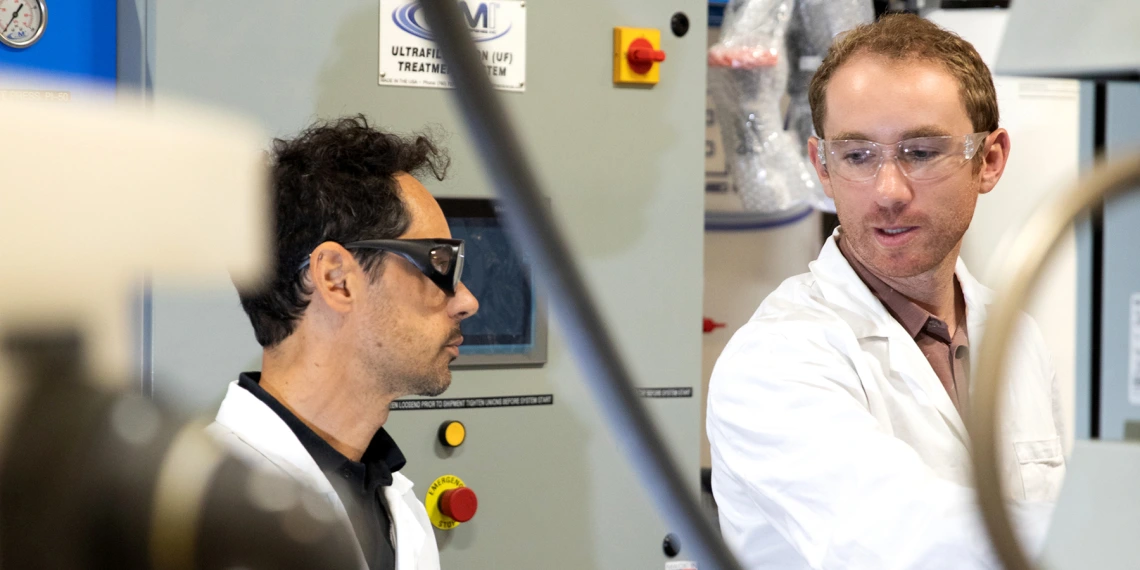Collaborations at the WEST Center drive innovation and national recognition

Andrea Achilli (left) and Luke Presson (right) at the WEST Center
Leslie Hawthorne Klingler
Tucson, AZ — In June 2025, U.S. News & World Report ranked the University of Arizona No. 2 in the nation and No. 31 worldwide in water resources—recognition earned in large part by researchers at the state-of-the-art WEST (Water & Energy Sustainable Technology) Center.
WEST is a partnership between the University of Arizona, Pima County utilities, industry partners, and the community. Its unique scope enables it to train the future workforce as it develops and meaningfully tests new technologies that deal with water scarcity and reuse.
"It’s rare to have such easy access to a representative environment where you can run continuous, large-scale trials to work out issues before upscaling.” — Luke Presson, ORISE scientist, Army Corps of Engineers
“The WEST Center is pretty special,” says Luke Presson, an ORISE scientist with the Army Corps of Engineers. He points to the purple pipes that carry 15 gallons per minute of treated wastewater directly through the facility. “It’s rare to have such easy access to a representative environment where you can run continuous, large-scale trials to work out issues before upscaling.” Another standout feature, he says, is an ultrafiltration/reverse osmosis system that has functioned without interruption for the past seven years.
Nicholas Josefik, Presson’s supervisor at the U.S. Army Engineer Research Development Center (ERDC), underscores the value of working with WEST: “The WEST center gives us unique access to technologies and equipment that have been years in the making—not to mention the opportunity to work with some of the leading researchers in the water and wastewater field. Our work together allows us to perform cutting edge research to meet the needs of the federal government to keep our nation’s water supply safe and secure.”
Beyond research, WEST is training the next generation of leaders in water security and reuse. In July, the center hosted U.S. Military Academy cadets for the West Point Water Reuse Field School, part of the Army’s sponsored Water Resiliency Program. The two-week course combined classroom instruction with lab practice in advanced treatment and reuse systems, giving cadets hands-on experience with technologies that could reduce supply chain risks in the field.
WEST is also partnering with Pima County on workforce development, designing courses modeled on the cadet program to prepare new civilian water operators and help address operator shortages.
See also: WEST–ERDC partnership propels water reuse for national security

